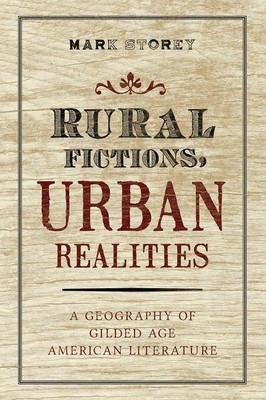
- We will send in 10–14 business days.
- Author: Mark Storey
- Publisher: Oxford University Press, USA
- ISBN-10: 0190272422
- ISBN-13: 9780190272425
- Format: 15.6 x 23.4 x 1.2 cm, softcover
- Language: English
- SAVE -10% with code: EXTRA
Reviews
Description
The diminishment of rural life at the hands of urbanization, for many, defines the years between the end of the Civil War and the dawn of the twentieth century in the U.S. Traditional literary histories find this transformation clearly demarcated between rural tales-stories set in the countryside, marked by attention to regional dialect and close-knit communities-and grittier novels and short stories that reflected the harsh realities of America's growing cities. Challenging this conventional division, Mark Storey proffers a capacious, trans-regional version of rural fiction that contains and coexists with urban-industrial modernity.
To remap literary representations of the rural, Storey pinpoints four key aspects of everyday life that recur with surprising frequency in late nineteenth-century fiction: train journeys, travelling circuses, country doctors, and lynch mobs. Fiction by figures such as Hamlin Garland, Booth Tarkington, and William Dean Howells use railroads and roving carnivals to signify the deeper incursions of urban capitalism into the American countryside. A similar, somewhat disruptive migration of the urban into the rural occurs with the arrival of modern medicine, as viewed in depictions of the country doctor in novels like Sarah Orne Jewett's A Country Doctor and Harold Frederic's The Damnation of Theron Ware. This discussion gives way to a far darker interaction between the urban and the rural, with the intricate relationship of vigilante justice to an emerging modernity used to frame readings of rural lynchings in works by writers like Bret Harte, Charles Chesnutt, Paul Laurence Dunbar, andOwen Wister. The four arenas-transport, entertainment, medicine, and the law-used to organize the study come together in a coda devoted to utopian fiction, which demonstrates one of the more imaginative methods used to express the social and literary anxieties around the changing nature of urban and rural space at the end of the nineteenth century. Mining a rich variety of long neglected novels and short stories, Rural Fictions, Urban Realities provides a new literary geography of Gilded Age America, and in the process, contributes to our understanding of how we represent and register the cultural complexities of modernization.
EXTRA 10 % discount with code: EXTRA
The promotion ends in 20d.12:27:06
The discount code is valid when purchasing from 10 €. Discounts do not stack.
- Author: Mark Storey
- Publisher: Oxford University Press, USA
- ISBN-10: 0190272422
- ISBN-13: 9780190272425
- Format: 15.6 x 23.4 x 1.2 cm, softcover
- Language: English English
The diminishment of rural life at the hands of urbanization, for many, defines the years between the end of the Civil War and the dawn of the twentieth century in the U.S. Traditional literary histories find this transformation clearly demarcated between rural tales-stories set in the countryside, marked by attention to regional dialect and close-knit communities-and grittier novels and short stories that reflected the harsh realities of America's growing cities. Challenging this conventional division, Mark Storey proffers a capacious, trans-regional version of rural fiction that contains and coexists with urban-industrial modernity.
To remap literary representations of the rural, Storey pinpoints four key aspects of everyday life that recur with surprising frequency in late nineteenth-century fiction: train journeys, travelling circuses, country doctors, and lynch mobs. Fiction by figures such as Hamlin Garland, Booth Tarkington, and William Dean Howells use railroads and roving carnivals to signify the deeper incursions of urban capitalism into the American countryside. A similar, somewhat disruptive migration of the urban into the rural occurs with the arrival of modern medicine, as viewed in depictions of the country doctor in novels like Sarah Orne Jewett's A Country Doctor and Harold Frederic's The Damnation of Theron Ware. This discussion gives way to a far darker interaction between the urban and the rural, with the intricate relationship of vigilante justice to an emerging modernity used to frame readings of rural lynchings in works by writers like Bret Harte, Charles Chesnutt, Paul Laurence Dunbar, andOwen Wister. The four arenas-transport, entertainment, medicine, and the law-used to organize the study come together in a coda devoted to utopian fiction, which demonstrates one of the more imaginative methods used to express the social and literary anxieties around the changing nature of urban and rural space at the end of the nineteenth century. Mining a rich variety of long neglected novels and short stories, Rural Fictions, Urban Realities provides a new literary geography of Gilded Age America, and in the process, contributes to our understanding of how we represent and register the cultural complexities of modernization.


Reviews